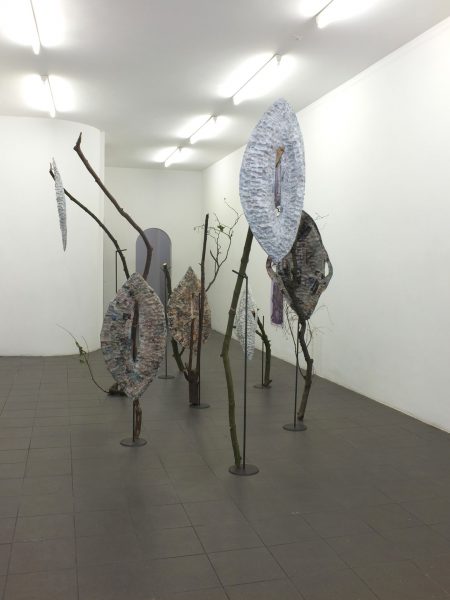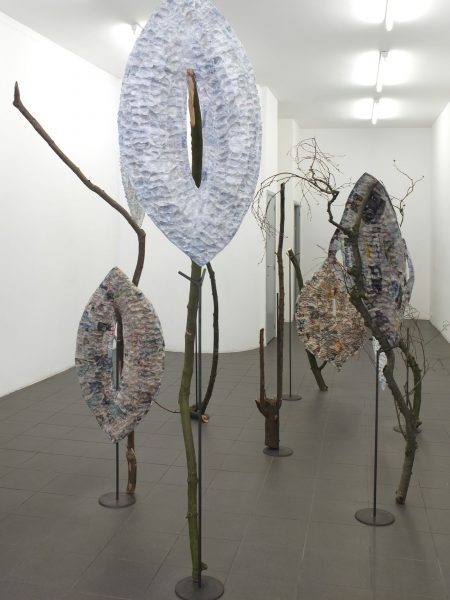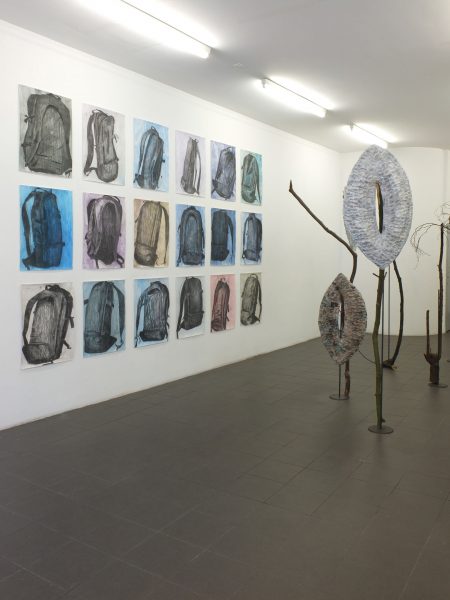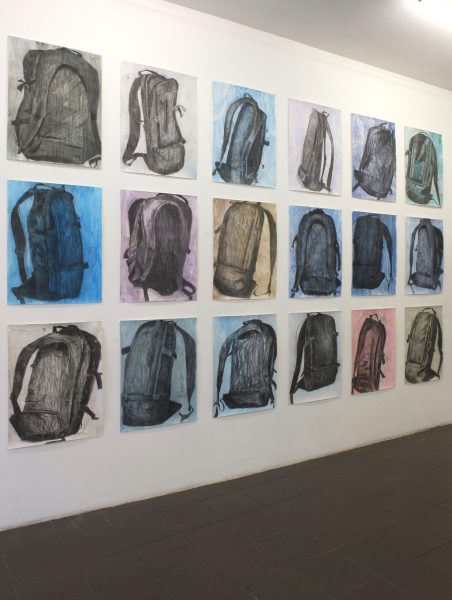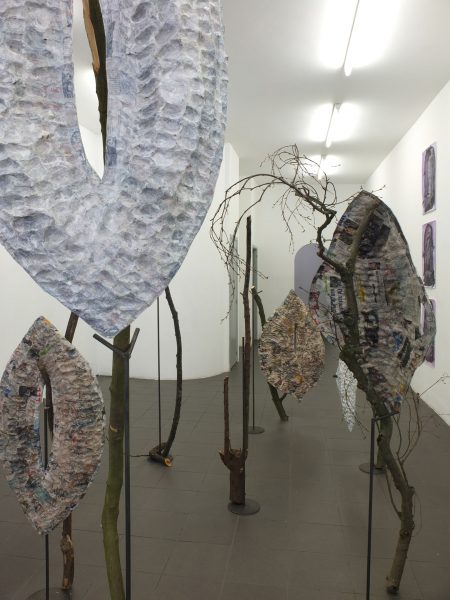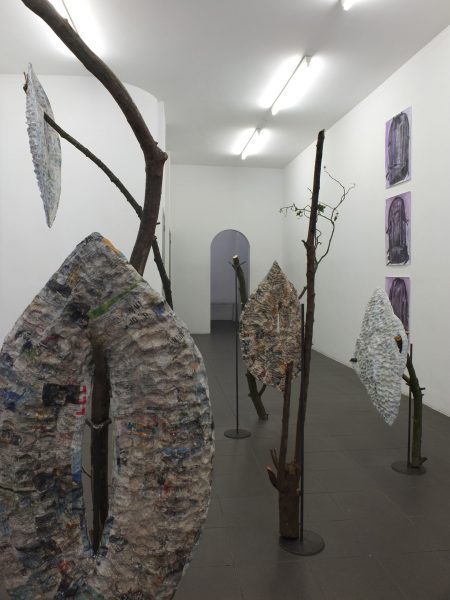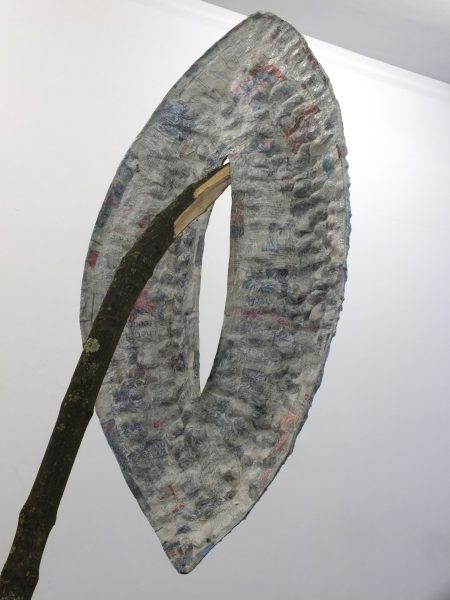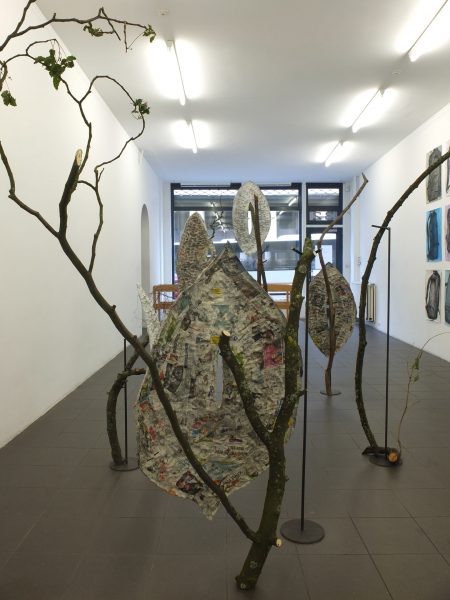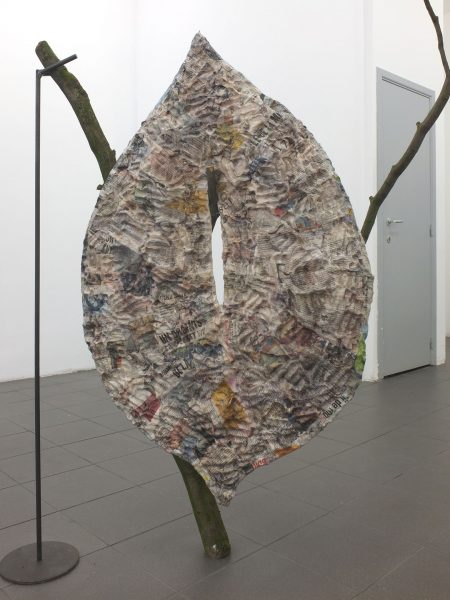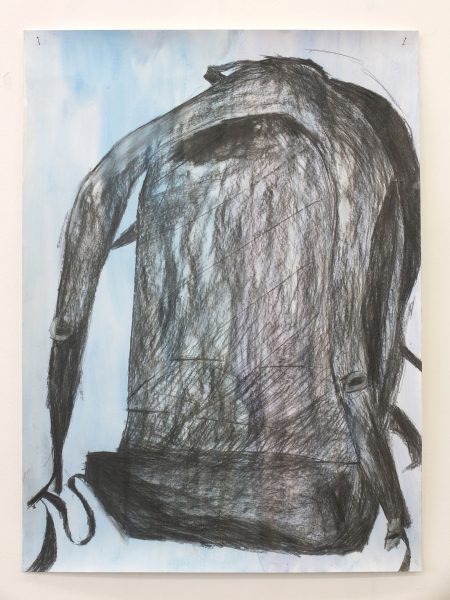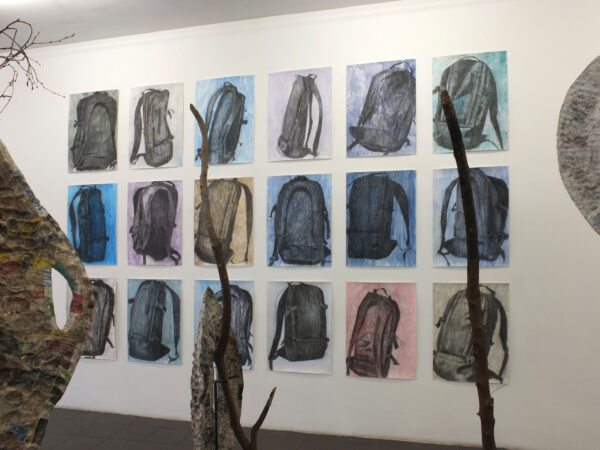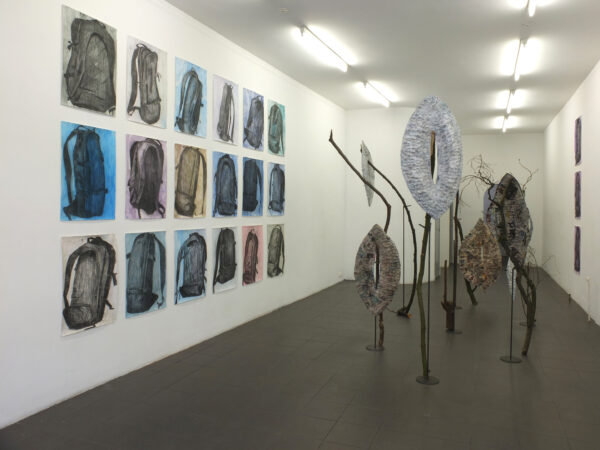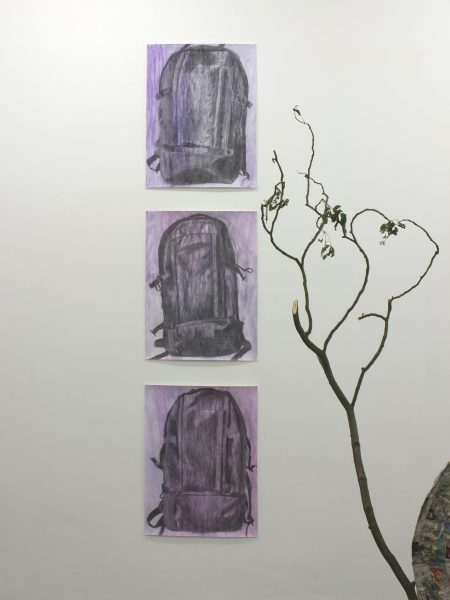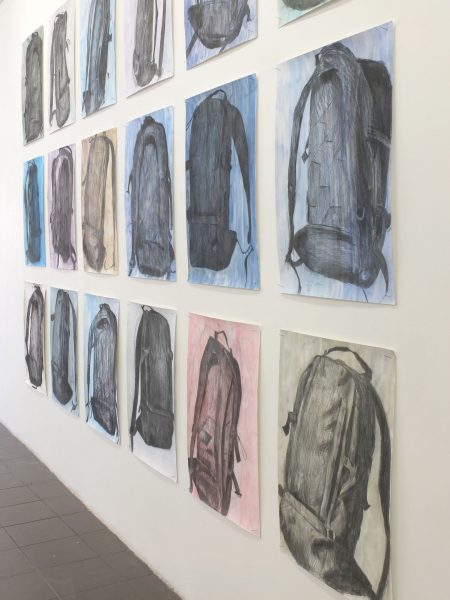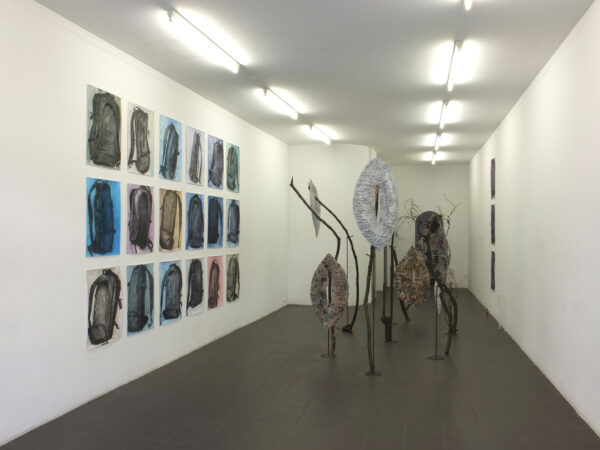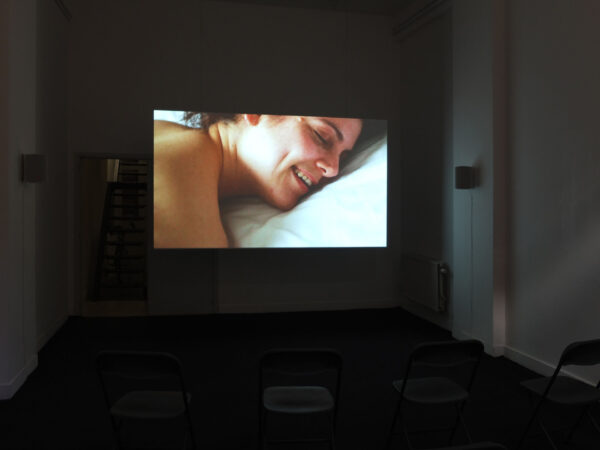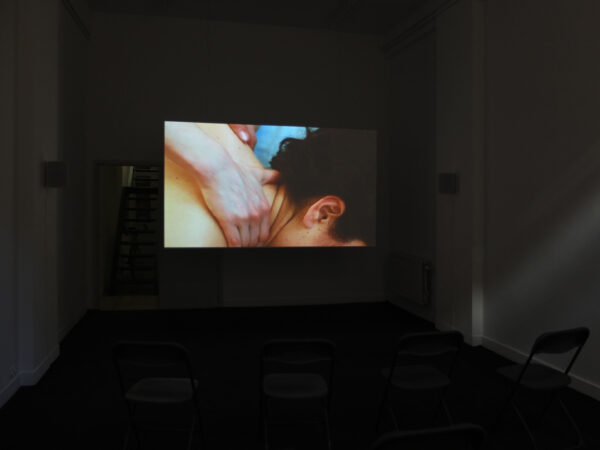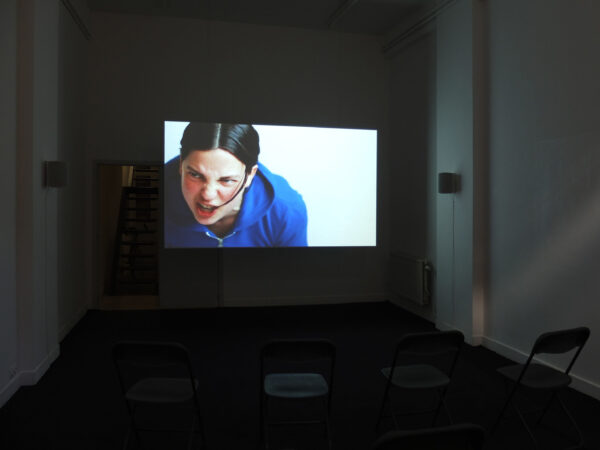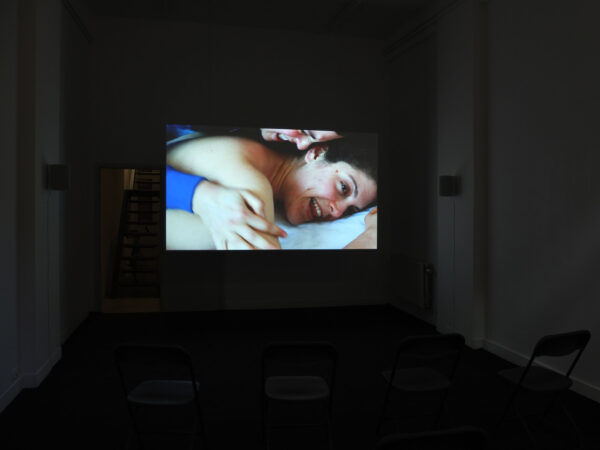OPENING
TUESDAY 22.04.14 AT 7PM
EXHIBITION
23.04.14 – 08.06.14
The main part of Shelly Nadashi’s short film A Hidden Quiet Pocket (AHQP) is edited and directed as a formal and minimalist theatre dialogue. It’s a dialogue between a masseuse and her wealthy client (spectacularly enacted by Hagar Tennenbaum) asking the masseuse for advice about the potential value of a piece of real-estate she owns: how much rent could she ask for it? While the client – her speech between blasé and naivety – relishes passively in her position of property owner, the masseuse expertly working the body of her client -; relaxing every muscle and resistance, extracting and massaging out every detail of the property’s high-standing qualities. Reformulating every word of her client with a more refined vocabulary, the dialogue distorts more and more towards a fusional sort of feedback, giving the impression that it is the masseuse who’s actually whispering the words into her clients ear; her envy merging with the relishing fantasy of her client; though at the service of her client, it becomes less and less clear who’s actually in charge, who is manipulating whom.
If Nadashi’s puppeteer training was a straightforward presence in her former works, it is much more oblique in the works that she presents in this show. But parallel the hand-manipulation of the massage-situation in AHQP with the classic horror-story motif of puppet-puppeteer relations going awry and you get a straight look at the power-play and its shifting positions that is shown in AHQP. The ambiguity starts with a formal aspect of the movie: during the main part of the film, both voices are dubbed by the artist, and the filming and editing done such that, both characters could have been played by the same person. Only in the final, culminating chapter, both characters are seen together, this time with their respective (not dubbed) voices. Here the pair seem to merge truly (in a mock-transference), and in this merged transference, the role-play and complicity of both positions becomes apparent; all was just a play in which each fulfilled a pre-destined role: this is as close as the masseuse will ever get to owning property and it is as close as the owner will ever get to handing it over and letting herself go. As such, the movie seems to offer a fair glimpse at the relation between a wellness and health culture, and the luxurious world of power and possession: the new-age ideology with its freeing of one-self and letting go, as a (parasitic) supplement of a capitalist society. And maybe the fore-mentioned horror motif represents the ultimate escape fantasy –as a temporary suspension of power- of the puppeteer: to be manipulated by its own puppet.
A Hidden Quiet Pocket is also the title of the entire exhibition and resonates well with each of the independent bodies of work. On the walls of the ground-level, drawings of backpacks, looking like baggy bodies with shapeless contents, appear as un-animated characters. Contained with some sort of consciousness, they somehow confirm or stress the impression people actually wearing backpacks give of themselves as utterly unconscious of their bags and, in extension thereof, of their backs. The drawings alternate in a rhythm of backpacks facing us or shying away from us. In this they somehow echo the shield-like sculptures that are grouped like an orchard in the centre of the space. With their papier-maché shields mounted on tree-branches, they resemble tribal totems or animistic mannequins with a huge vertical eye. Whether facing us, or shying away from us, both the bags and the shields echo one another. Alongside the more scenic ground level, this exhibition offers different and, on the whole, more versatile angles towards the idea of a hidden pocket, each in its own way turning its back on us.
